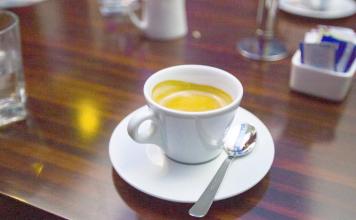Description of Flavor of Coffee beans treated with Red Wine
In addition, some containers are similar to red wine fermentation plugs or one-way exhaust valve devices through which carbon dioxide can be discharged to control the air concentration in the container. At this time, the coffee fruit in the container is acetic acid fermentation, this bean flavor is relatively bright and clean, with citric acid flavor Sasa described in the competition: the selection of Columbia Cloud Manor (Las Nubes) Ramidan species (Rume Sudan), the coffee fruit in a sealed metal container for anaerobic fermentation, the fermentation process of PH, the type and number of bacteria involved in the fermentation and other variables for purposeful control. The processor injects carbon dioxide into the container to prevent oxidation from producing volatile acid, a process known as lactic acid fermentation. In the process, malic acid and stone acid are formed, and the stone acid is relatively stable, so the coffee beans fermented by lactic acid have more mellow acidity and have cheese, nutty and creamy flavors. In the traditional process of raw coffee beans, whether it is washing or sun exposure, or honey treatment, it will produce "fermentation" more or less. However, different fermentation substances, different environments, different drying processes, etc., create a different treatment flavor and taste.
In the above treatment, it is easy to have a problem: the changeable fermentation degree of coffee beans is difficult to control. However, the red wine treatment method can ensure the quality of coffee beans by controlling the PH value, even temperature and humidity, and closed fermentation will firmly "tie" the aroma substances of coffee beans. After looking up the data, the editor learned that 2015 WBC contestant Sasa brought a Colombian bean similar to the red wine brewing process, which once aroused heated discussion in the circle. The red wine treatment of coffee beans, also known as red wine treatment, is inspired by the brewing technology of red wine. It is said that even in Colombia, only eight estates have succeeded in bringing coffee beans treated in this way to market. According to the data of these 8 estates, the red wine treatment methods can be roughly divided into acetic acid fermentation (Aerobic aerobic fermentation), lactic acid fermentation (Anaerobuic anaerobic fermentation) and mixed fermentation (Mix Fermentation).
Hartman's story, like his coffee, is legendary. Hartman Manor is located in Chilidge, Santa Clara. The founder's name is Eloise Strauss Hartman. He was born on June 20, 1891 in the Moravilla region of Austria and Hungary in what is now the Czech Republic, and died on May 25, 1970 at the age of 78. Today's Hartman Manor is a family business founded by Latip Hartman (son of Eloise) in 1940. In 1966 Latip married Dinola Sandy of Costa Rica. They have five sons, Latipa Jr., Alan, Alexander, Alice and Kelly. Each family member is responsible for the growth management, harvesting and handling of the coffee and the visit to the manor. A family estate that has grown coffee for more than 100 years is a legend in itself.
The family business has a state cup testing laboratory and a sample baking room. Rigorous cup test of each batch of coffee fruit. This ensures that the coffee quality at Hartman Manor is stable and is always looking for progress. Their scientific attitude towards coffee and nearly 100 years of family experience ensure their excellent production.

Important Notice :
前街咖啡 FrontStreet Coffee has moved to new addredd:
FrontStreet Coffee Address: 315,Donghua East Road,GuangZhou
Tel:020 38364473
- Prev

What kind of milk do you use to make coffee and how to make it?
Coffee pull introduction the preparation work for making pull flower coffee is very important. You must ensure that the following points are foolproof: 1. Make sure the steam rod is clean; 2. Make sure the milk is fresh enough and the temperature is 4-7 ℃. The lower the temperature of the milk, the better, but don't freeze. Prepare a thermometer. The temperature of milk should not exceed 35-40 ℃ in the drying stage and 65-70 ℃ in the homogenization stage.
- Next

Does it matter if the coffee machine takes longer to extract and the caffeine is more?
Brewing a perfect cup of Italian espresso or cappuccino coffee requires the help of a special coffee machine. The machine that makes this coffee is the espresso machine. This machine uses 9 atmospheres of pressure and 90 degrees Celsius of steam to extract 30 ml of strong coffee in a short time of 24 seconds. characteristics
Related
- What is the meaning of lactic acid fermentation with coffee bean treatment?
- How to judge the state of foam by sound?
- How does the latte pull out the unicorn pattern? Come to get for a little trick to improve the flower pull!
- Will flower pulling affect the taste of the latte?
- Do you know the history of coffee?
- The difference between honey treatment and sun washing what is raisin honey treatment?
- What kind of milk can a novice use to make coffee foam to keep the foam longer? The correct method and skills of milking tutorial sharing
- Why do washed coffee beans taste sour? Flavor characteristics of washed Coffee
- Introduction to the skill of how to practice the size and height of water injection around the circle of hand-brewed coffee
- How do beginners practice coffee flower drawing from scratch?

